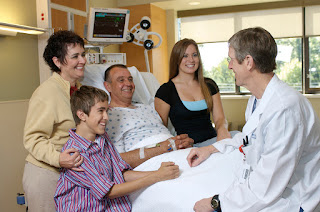By: Theanna Lynn
When you’re in an internal medical residency program, you’re keeping a lot of balls in the air. Learning new skills, meeting new people, and practicing medicine to prepare for your future professional goals. It’s important to remember to have fun and take a break every once in a while. Here's some medical trivia on something everyone in the medical field is familiar with: the white coat.
The history of the white coat began in the nineteenth century as physicians tried to differentiate themselves from mystics and quacks. This was easy to do with something long associated with scientists: the lab coat. Since then it has become a commonplace garb for doctors of every specialty.
Although it has only been around since 2006, the white coat ceremony has become a very popular rite marking a medical student’s transition from studying preclinical to clinical health sciences. The timing of the white coat ceremony can differ depending on the school, but it often signifies a level of knowledge and ability to start working with patients.
A longer tradition than the white coat ceremony, the length of the coat has long been symbolic. While this rule is not absolute, and does not apply to all health professionals, the tradition is that the shorter the coat, the less training an individual has received. For instance, medical students wear the shortest coats. They are not yet physicians and cannot practice medicine without supervision. Interns, who have more experience than medical students, have slightly longer coats.
Residency follows the intern year, and residents typically wear longer coats than interns. Once the internship has been completed, individuals pass an exam to be able to practice independently. Some physicians will then opt to pursue additional training through a residency program. The time commitment of a residency depends on the specialty selected. The Georgetown internal medicine residency program, for example, would typically last for three years. Attendings have more training than residents and wear a full-length coat.
While the white coat length can be indicative of training, it does not hold true for all physicians. The length ultimately comes down to a physician’s preference, if they choose to wear one at all. Regardless of the choice, the white coat has a long history in medicine and continues to change in tradition and use.



